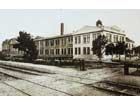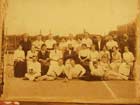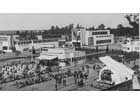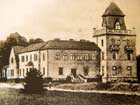History/History/Between democracy and dictatorship
Between democracy and dictatorship
The position of Pardubice as an important economic, social and administrative centre became stronger with the creation of the Czechoslovak Republic in 1918. It was here that the Telegrafia electrical plant was opened in 1919. The Explosia Semtín explosive factory was then established not far from Pardubice one year later and became the basis of the large chemical complex that was to follow.
Sport began to play an ever greater role in the life of the town. The 1920s, for example, saw the foundation of the Juniorka tennis club and the first Zlatá přilba (Golden Helmet) speedway race, which is held to this day. It is little wonder that Pardubice held the national Physical Education and Sport Fair in 1931, an event that brought the town great renown.
The bravest citizens of Pardubice became involved in the resistance movement in some way following the Nazi occupation and the outbreak of the Second World War. Czechoslovak parachutists sent from England to prepare the assassination of Heydrich, the acting Imperial Protector, found help and shelter in Pardubice and its surroundings. However, a number of patriots from Pardubice paid with their lives as part of the Nazi retribution that followed his death. The victims are commemorated to this day by a place of reverence at the former execution ground in Zámeček, where the people of Ležáky, a village completely wiped out by the Nazis, also lost their lives. Pardubice was also struck by three air raids by Anglo-American aircraft at the end of the war. The bombs were dropped to destroy the local refinery and airfield, but unfortunately left a number of people dead and destroyed certain other buildings.
The post-war sigh of relief did not last long as the communist coup of 1948 brought the entire country another, no less brutal totalitarian regime. Hopes of a return to freedom brought about by the Prague Spring some twenty years later were soon put to rest in August 1968. In contrast to other areas of Czechoslovakia, the events of that month passed off in Pardubice without violence or victims, undoubtedly thanks to the fact that the entire Pardubice area was first occupied by Polish and not Soviet forces.
Apart from 1968, however, the communist era made the same mark on Pardubice as on the rest of the country. Private ownership and private activity were both eliminated and the economy focused on heavy industry. People were repressively terrorised and silenced with the threat of prison, persecution or loss of employment, which the people of Pardubice mainly found in major production plants manufacturing goods at the instruction of Moscow. In spite of this, however, industry in Pardubice during the socialist era did manage to develop somehow; chemicals at Synthesia Semtín, engineering at Továrny mlýnských strojů (Mill Machines Factories) and electronics at Tesla. These enterprises were the mainstays of the economy of that time. They employed thousands of people and later became the inadvertent base for industrial development following the definitive collapse of communism in 1989.

.jpg)
.jpg)




.jpg)